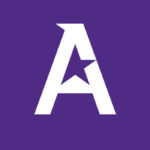Create a culture that means business™
Email address
Many companies tout their employee training and development programs as major perks of employment, but their staff doesn’t always agree. Any professional education program will come with a price tag, so it’s crucial that your employees truly benefit from these offerings. If you offer programs that don’t meet the needs of your employees, you’ll pull them away from their work and add unnecessary commitments to their plate: a lose-lose situation for both the company and employees. Before you put a program in place, but sure that you’re establishing activities or courses that will genuinely contribute to your employees’ growth.
Do your homework
If you’re a program administrator, you have some essential homework to do before you convene your very first session. You need to find out each staff member’s attitude and experience about being in the role of a student. The right training approach for someone fresh out of graduate school will be very different from that for someone who hasn’t seen the inside of a classroom for decades. It’s also a good idea to ask each staff member how they learn best: Listening to explanations? Watching demonstrations? Role-playing and hands-on experimentation? A well-designed employee survey can give you valuable background information with which to design or select your education program.
Match training to needs
The ideal training programs will advance the interests of your entire business as well as that of individual staff members. Your choice of subject matter for employee development courses should be guided by the actual skill sets needed to meet current on-the-job demands. For instance, are your developers and engineers trained on the most cutting-edge tools and technology?
If you’re providing career advancement opportunities, your training needs to keep pace with your employees. Do you have leadership training in place for new managers? Do you have program or protocol training for employees who move cross functionally?
Set goals and measure achievement
Before starting the program, trainers must develop a list of competencies that students will achieve by the end of the program. These goals usually take the form of sentences stating, “After completing the training, students will be able to _______.” The blank is filled in with a specific skill or element of knowledge. Once these goals are set down, they provide a template for measuring the effectiveness of the training program after it has been completed. In addition to checking on how much your employees have learned, it is also important to ask them to evaluate the overall training experience. Anonymous survey tools allow participants to give constructive criticism of your program and trainer, providing valuable feedback for improving future sessions.
When they are well-designed, employee training and development programs constitute a significant on-the-job perk. Once you’ve committed the resources to making such education available to your staff, it’s important to go the extra mile and ensure the training is delivered in a way that employees will embrace and appreciate.

